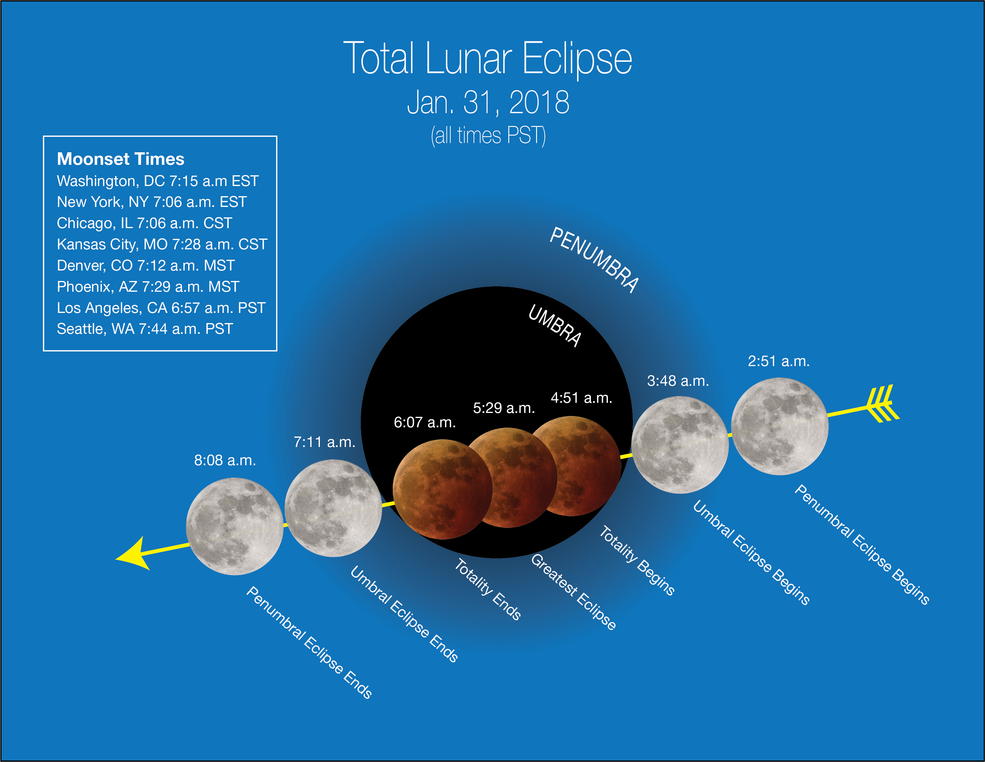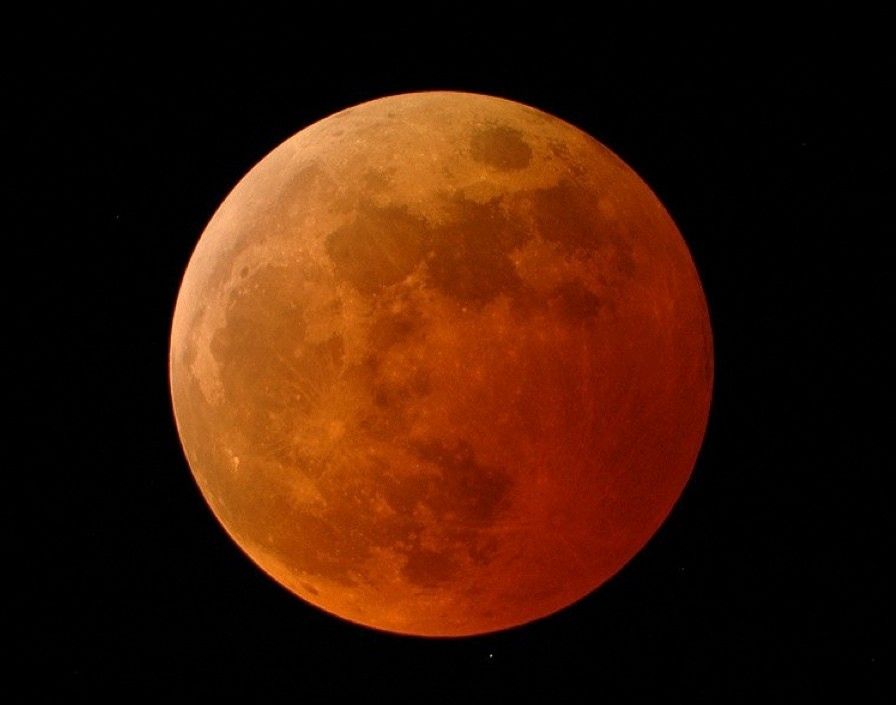If you were captivated by August's total solar eclipse, there's another sky show to look forward to next week: a total lunar eclipse, happening Wednesday, Jan. 31, 2018. Below, 10 things to know about this astronomical event, including where to see it, why it turns the Moon into a deep red color, and more.
1. First things first. What's the difference between solar and lunar eclipses? We've got the quick and easy explanation in this video: svs.gsfc.nasa.gov/12648
2. Location, location, location. What you see will depend on where you are. The total lunar eclipse will favor the western U.S., Alaska, Hawaii, and British Columbia on Jan. 31. Australia and the Pacific Ocean are also well placed to see a major portion of the eclipse, if not all of it.
3. Color play. So, why does the Moon turn red during a lunar eclipse? Here's your answer: www.youtube.com/watch?v=lNi5UFpales
4. Scientists, stand by. What science can be done during a lunar eclipse? www.nasa.gov/feature/goddard/2018/what-scientists-can-learn-about-the-moon-during-the-jan-31-eclipse
5. Show and tell. What would Earth look like from the Moon during a lunar eclipse? See for yourself with this artist's concept: svs.gsfc.nasa.gov/4157

6. Ask me anything. Mark your calendars to learn more about the Moon during our our Reddit AMA happening Monday, Jan. 29, from 3-4 pm EST/12-1 pm PST.
7. Social cues. Make sure to follow @NASAMoon and @LRO_NASA for all of the latest Moon news leading up to the eclipse and beyond.
8. Watch year-round. Can't get enough of observing the Moon? Make a DIY Moon Phases Calendar and Calculator that will keep all of the dates and times for the year's moon phases right at your fingertips: www.jpl.nasa.gov/edu/learn/project/make-a-moon-phases-calendar-and-calculator/.
Then, jot down notes and record your own illustrations of the Moon with a Moon observation journal, available to download and print from moon.nasa.gov.
9. Lesson learned. For educators, pique your students' curiosities about the lunar eclipse with this Teachable Moment: /www.jpl.nasa.gov/edu/news/2018/1/18/how-to-watch-a-total-lunar-eclipse-and-get-students-observing-the-moon/
10. Coming attraction. There will be one more lunar eclipse this year on July 27, 2018. But you might need your passport—it will only be visible from central Africa and central Asia. The next lunar eclipse that can be seen all over the U.S. will be on Jan. 21, 2019. It won't be a blue moon, but it will be a supermoon.



































